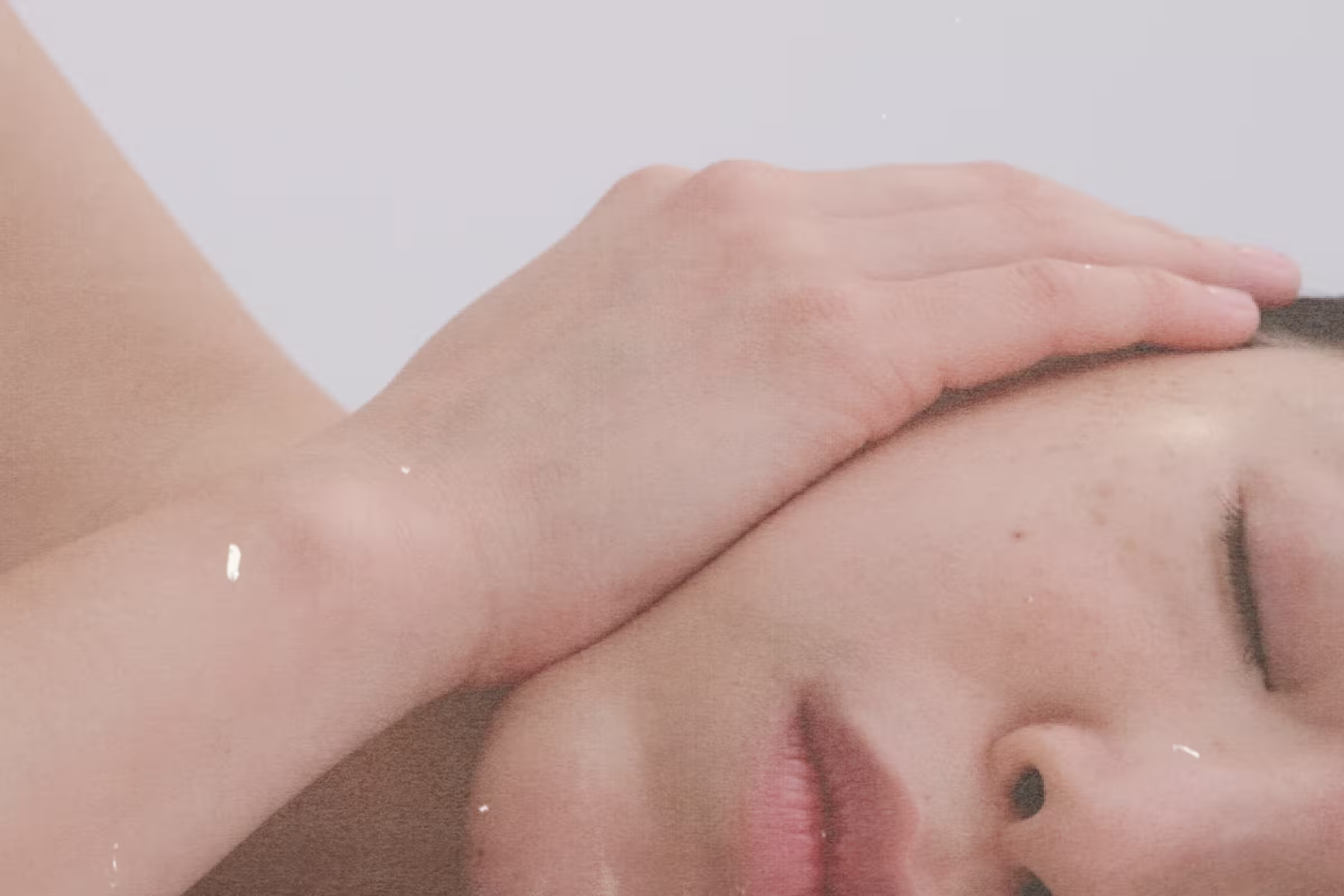

6 Causes of Vulvar Pain
Learn more about the most common causes of vulvar pain, and what to do about it.
Words by Olivia Cassano
Scientifically edited by Dr. Krystal Thomas-White, PhD
Medically reviewed by Dr. Sameena Rahman, MD
There are many reasons why you may be experiencing vulvar pain, from chronic skin conditions to vaginal infections. Whatever the cause, though, pain is never normal — despite what centuries of medical gaslighting may have led us to believe.
Before we dive into the possible causes, we should remind you that the vulva and vagina are two different things. The vagina is the inner canal that leads to the cervix. The vulva, on the other hand, is the outer genitalia. It includes the labia majora (outer labia), labia minora (inner labia), clitoris, and vaginal opening.
Although most people use the term “vagina” to refer to the vulva, it's crucial to know the difference and label them correctly because vulvar and vaginal pain are two different things. This distinction makes it all the easier to recognize where pain is coming from and the potential cause. It also makes it easier for a healthcare provider to understand your symptoms and recommend the right treatment.
Below are common causes, and how they’re treated.
Symptoms
Pain in the vulva can manifest in different ways:
- Itching and swelling of the vulva
- Sensitivity and tenderness
- A throbbing or aching pain of the vulva
- A burning or stinging sensation
- Pain or discomfort when you have sex or pee.

Recurrent symptoms? Get Evvy's at-home vaginal microbiome test, designed by leading OB-GYNs.
Causes of vulvar pain
Pain in or around your vulva is common, but that doesn’t make it normal. It can be a sign of a chronic condition, cyst, or vaginal infection.
Vulvodynia and vestibulodynia
Vulvodynia is a blanket term used to describe a chronic pain condition that affects the vulva and has no identifiable cause. It can be described more specifically based on where the pain is felt and whether it's triggered by any activity, such as sex or inserting a tampon:
- Generalized vulvodynia: pain felt in the entire vulva
- Localized vulvodynia: pain felt in only one place on the vulva
- Provoked vulvodynia: pain triggered by contact with the vulva
- Unprovoked vulvodynia: pain not triggered by any known factor, also called "spontaneous vulvodynia"
The main symptom of vulvodynia is pain that can feel burning, stinging, or throbbing. It's classified as vulvodynia if you've had persistent vulvar pain for over three months without an identified cause.
Vestibulodynia, on the other hand, is a type of vulvodynia where pain affects the vaginal vestibule (the area between the labia minora that contains the opening to both the urethra and the vagina).
To diagnose vulvodynia, your doctor will go by process of elimination — if the cause of the pain is known, then it isn't vulvodynia.
Because vulvodynia can present in different ways and its cause is uncertain, there isn't a standardized treatment. Doctors may suggest various options to manage vulvodynia symptoms based on your experiences, including medication, physical therapy, counseling, topical treatments, or in some cases surgery.
For those seeking a comprehensive approach to chronic vaginal and vulvar discomfort, Evvy’s Complete Treatment Program offers personalized care. This evidence-based program combines detailed vaginal microbiome testing, tailored prescription treatments, and 1:1 coaching to address underlying imbalances and provide long-term relief.
Yeast infections
A yeast infection, also known as vulvovaginal candidiasis, is an extremely common vaginal condition caused by the overgrowth of the fungus Candida. This fungus is naturally present in our body (and vaginal microbiome) and is generally harmless — unless it grows too much.
When Candida overgrows it can cause a slew of unpleasant symptoms, including:
- Vaginal and vulvar itching, redness, or soreness
- White, clumpy vaginal discharge
- Painful sex
- Soreness or stinging when you pee.
Yeast infections can be treated with either prescription or over-the-counter antifungal medication. For immediate relief from itching and irritation, Evvy’s Anti-Itch Vulva Cream can soothe discomfort while maintaining the delicate pH balance of your vulva.
STIs and STDs
Most sexually transmitted infections (STIs) and sexually transmitted diseases (STDs) are asymptomatic, which means they won’t cause any symptoms and you won’t even know you have one unless you get tested. That said, when they do cause symptoms, pain is often one of them.
Some sexually transmitted infections that cause pain and discomfort include:
Chlamydia and gonorrhea can be treated with antibiotics, but genital herpes isn’t curable. If you test positive for herpes, your healthcare provider can prescribe a combination of antiviral medication and topical cream to treat flare-ups.
Bartholin’s cyst
The Bartholin glands are two pea-sized glands found at each side of the vaginal opening. They release a fluid that helps lubricate the vagina during sexual intercourse — basically, the reason you get "wet" when you're turned on.
If these glands become blocked, they can form a cyst that looks like a swollen bump at the base of the vagina. Bartholin gland cysts are usually painless unless they grow very large or become infected, which can lead to an abscess. You may feel pain in your vulva when you walk, sit, or have sex.
If your cyst isn't causing pain, you can try treating it at home by sitting in a warm, shallow bath or using a warm compress. If an abscess has formed, a healthcare professional will drain the cyst using a needle. Do not try to drain or pop the cyst yourself! If the cyst is persistent or recurrent, you may need to remove it surgically (a small procedure called marsupialization).
Lichen sclerosus and lichen planus
Vulvar lichen planus and lichen sclerosus are two chronic skin conditions that can cause pain in the skin of the vulva. Symptoms of lichen planus include:
- Dry, itchy rash on the vulva
- Pain or burning around the vulva and/or vagina
- Soreness, burning, and itching around the vulva
- Pain when having sex or peeing
- Bleeding after sex
- Abnormal vaginal discharge.
Symptoms of lichen sclerosus include:
- Dry, white patches on the vulvar skin
- Itching and soreness of the vulva (which can get worse at night)
- Genital lesions and bruising (especially after sex)
- Discomfort and pain around the vulva and vagina
- Painful sex
- Bleeding, blistering, or ulcers.
Unfortunately, there's no way to get rid of either condition completely, so the best course of action is to try and manage the symptoms with steroids, antihistamines, and over-the-counter topical creams.
Vulvar cancer
Vulvar cancer is incredibly rare, and not all genital pain is a sign of cancer — but it’s still important to know what signs to look out for. Symptoms can include:
- Pain, soreness, or tenderness of the vulva
- Itching or burning of the vulva
- Abnormal bleeding
- Changes in the color of the skin of the vulva
- Vulvar rash or warts
- Sores, lumps, or ulcers on the vulva
- Pelvic pain, especially when you pee or have sex.
When to see a healthcare provider
If you're dealing with pain and suspect that it may be caused by any of the reasons mentioned above (or something else), it's important to reach out to a healthcare provider. They can help identify the issue and provide the right treatment.
If you're experiencing pain in your vulva along with abnormal bleeding, abnormal vaginal discharge, burning or itching, or inflammation, please seek immediate medical attention.
Diagnosing long-term vulvodynia can be challenging. It should be conducted by a sexual medicine specialist or a vulvar pain or dermatologic specialist. They typically take a comprehensive approach that involves closely examining the vulva, assessing pelvic floor dysfunction (such as high-tone pelvic floor disorder), investigating the nerves that connect to the vulva (like the pudendal nerve), examining the nerve roots in the spine that supply the vulva, and considering the brain's role in the pain response.
Understanding what is normal for you and your body can make picking up any unusual symptoms easier. These symptoms could be caused by various conditions, some of which are relatively harmless, while others may be more serious. The only way to know for sure is to consult your healthcare provider.
FAQ
Is vulvar pain normal?
Pain in the vulva is common but it’s never normal. Pain is your body’s way of sounding the alarm and letting you know that something’s going on — so you shouldn’t ignore it. The good(ish) news is that many causes of genital pain can be easily treated with medication.
What is the fastest way to get rid of vulvar pain?
Treatment depends on what’s causing your pain. In some cases, treatment can relieve pain within a matter of days. Sometimes, though, pain is caused by a chronic condition with no identifiable cause, so it will take longer to ease pain.
Where is vulvodynia pain located?
Vulvodynia pain can be located anywhere in the vulva. Pain felt in the entire vulvar area is known as generalized vulvodynia, while pain felt in only one place on the vulva is called localized vulvodynia. If vulvodynia pain is located in the vaginal vestibule, it’s known as vestibulodynia.
Can vulvodynia feel like a UTI?
In some ways, yes. Vulvodynia pain is often described as burning, stabbing, or stinging, and it can affect the urethral opening, which might be confused with a urinary tract infection (UTI). It's worth noting that UTIs are caused by bacteria, while vulvodynia is a chronic condition with no identifiable cause. So even though vulvodynia symptoms might seem similar to a UTI, it's important to remember that the cause and treatment are very different.





